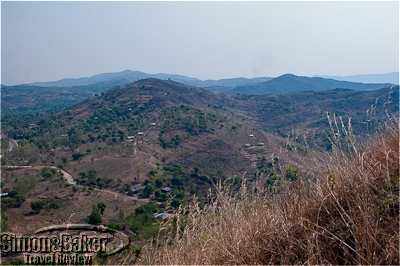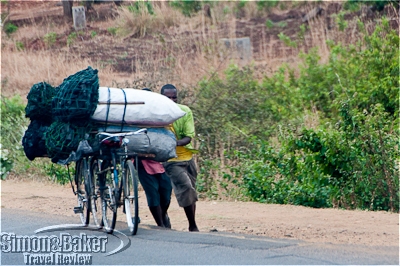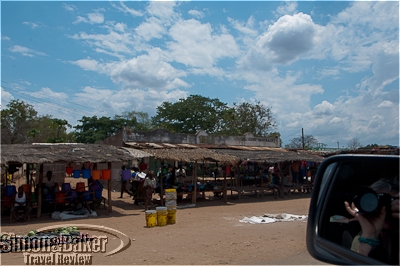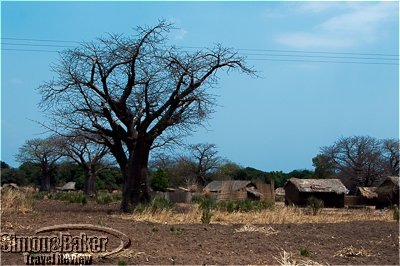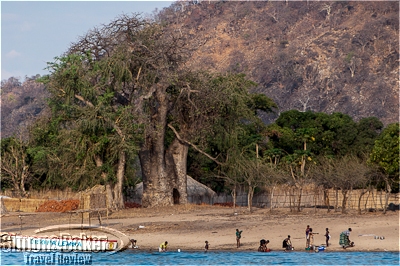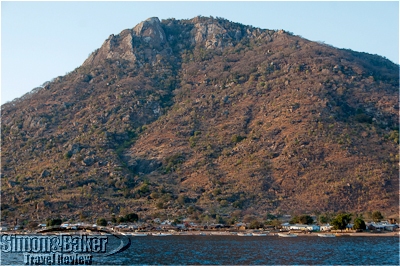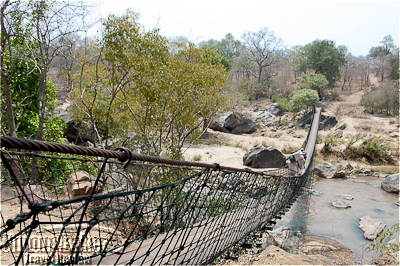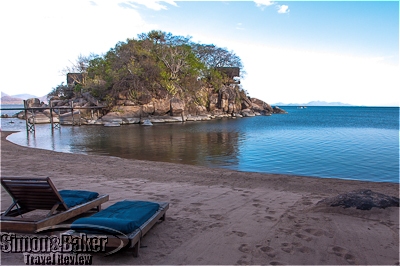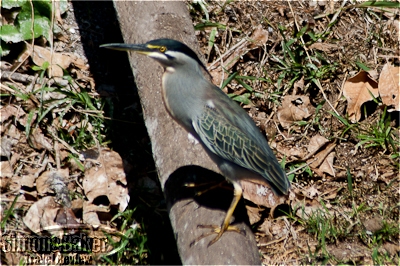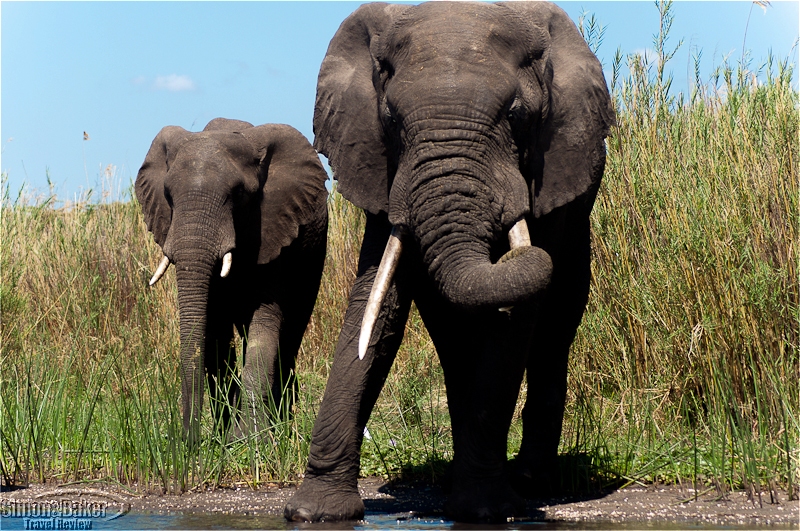
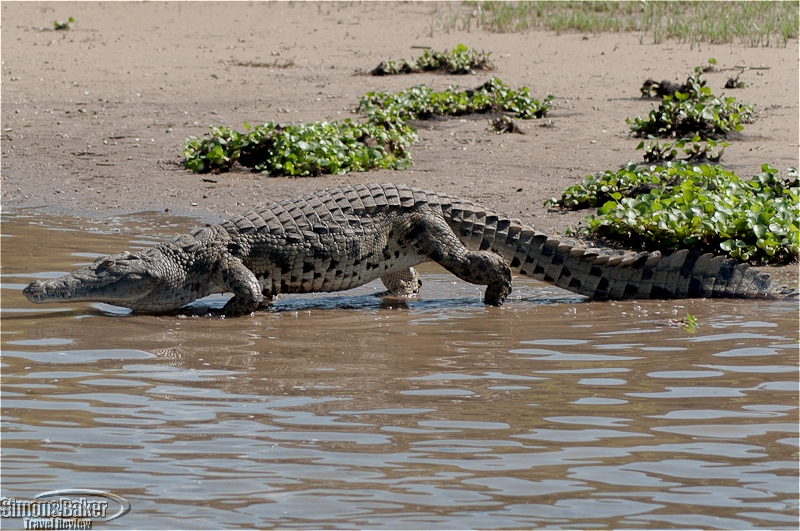
Dominating the entire country is Lake Malawi, the famous Lake of Stars of 19th century English explorer David Livingstone. Some 580 kilometer (360 mile) long and 75 kilometer (46 mile) wide at its largest, with depths that can reach down 700 meters (2,300 feet) and sun drenched beaches of soft golden sand tucked within its dramatic shores of high granite boulders, the lake had the feel of a fresh water inland sea. At the southern end of it, the Lake Malawi National Park and UNESCO World Heritage Site, with its tiny secluded islands and crystal clear waters was especially breathtaking and popular among water sport enthusiasts.
The Shire River flows out of Lake Malawi to snake along striking rocky banks on its southward journey down the Rift Valley toward Mozambique and the Zambezi River. Along the way it reached the two foremost wildlife reserves in the country. First, on the upper reaches of the river, the Liwonde National Park offered boating safaris that allowed an exceptional opportunity to enjoy close water access to the large population of elephants, hippos and crocodiles, as well as a vast array of waterfowl and birds. Further down river, along the lower Shire Valley, the Majete Wildlife Reserve after being poached to near oblivion in the 1980s and 1990s had been rehabilitated and restocked through a painstaking decade long effort to become the first Big Five safari destination in the county. Tourist facilities, including luxury properties, have appeared in these magnificent wilderness and lake areas but remain limited in number, promising an outstanding quasi private wilderness experience for visitors.
Cost Of Visiting Moderate
Currency The country’s unit of currency is the kwatcha, abbreviated internationally to MWK and simply K locally. At the time of my visit, there was an exchange rate of 425 MWK per United States dollar.
Electrical Current Electricity was based on the 220/240 volt system. The electric grid supply was somewhat erratic. Most of the tourism facilities where I stayed generated their own solar electricity and all had backup gas or diesel generators. A NW-135C adapter was necessary when using electrical outlets (as used in the United Kingdom)
How To Get There There were no direct flights from the United States to Malawi. I flew via Europe where there were nonstop flights to hubs in Nairobi or Johannesburg with connecting flights from Kenya Airways and South African Airways respectively to Lilongwe and Blantyre. Air Malawi also offered regional links between Malawi and Kenya, South Africa, Zambia and Zimbabwe. A valid passport was required for entering Malawi. Visas were not required for tourists from the United States, most European Union and British Commonwealth countries or Japan.
Location Malawi is located in southeastern Africa. It is bordered by Zambia to the northwest, Tanzania to the northeast and Mozambique to the south, southeast and southwest.
Measures The metric system prevailed.
Money Issues The properties I visited accepted U.S. dollars and credit cards. Local vendors in tourist areas also readily accepted cash in U.S. dollars, but did not accept denominations lower than five dollar bills (with change returned in local currency). I had been forewarned that one dollar bills were not accepted or exchanged anywhere in Malawi due to counterfeiting problems in the past. There were ATMs in the three main cities, Lilongwe, Blantyre and Mzuzu, that dispensed local currency only.
Technology The telephone system was rudimentary, with local mobile phone service apparently more reliable than landlines. My international 3G/4G GSM telephone had only rare random reception. However, reliable 2G communications were possible with a GSM card from local service providers. A slow WiFI connection was available in the urban areas and at some of the properties.
Time GMT/UTC + 2 hours
Transportation With relatively short distances between the destinations on my itinerary I used pre arranged road transfers to get around. While secondary roads were unpaved, main roads were paved, in reasonably good shape and with little motor traffic. Driving was on the left and speed was limited as it was commonplace to find people and animals on any road. Air links were available between cities and the main tourism destinations.
Shopping And Souvenirs I saw Supermarkets and European style shops in Lilongwe and Blantyre only with small markets and general stores in small towns and larger villages. Roadside vendors were ubiquitous in the countryside. Souvenirs included good quality woodcarving and straw goods as well as attractive small jewelry articles. In the markets, bargaining was expected.
South Malawi boasted more national parks and wildlife reserves than the remainder of the country. I especially enjoyed the Lilwonde National Park, considered Malawi’s premier game park, for its mix of boating and open top all wheel drive vehicle safari experience, including evening drives using a powerful spotlight to view nocturnal animals. However, my favorite park was the Majete Game Reserve for its heartwarming success story (as well as excellent game viewing). After its near demise in the late 1990s, the reserve was taken over in 2003 by African Parks, an international nonprofit organization dedicated to the rehabilitation and long term management of national parks in partnership with governments and local communities. After undergoing significant infrastructure development and massive translocation of wildlife (over 2,500 animals from 13 different species), Majete was home to a visibly thriving population of elephant, black rhino, leopard, lion, buffalo, sable antelope, zebra, Lichtenstein’s hartebeest and eland.
Reviewers Article and photographs by Josette King
Would You Visit Again? Yes
